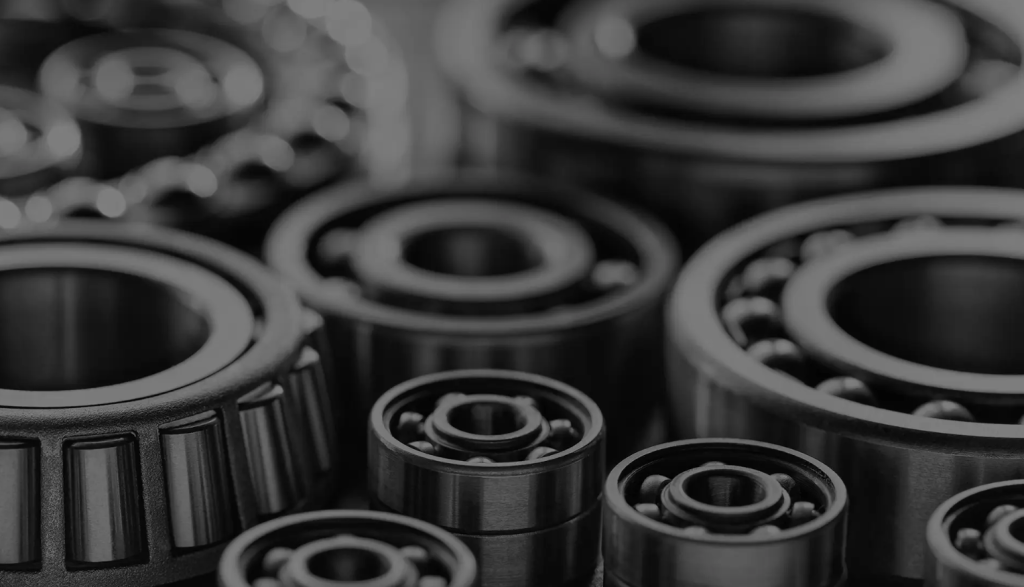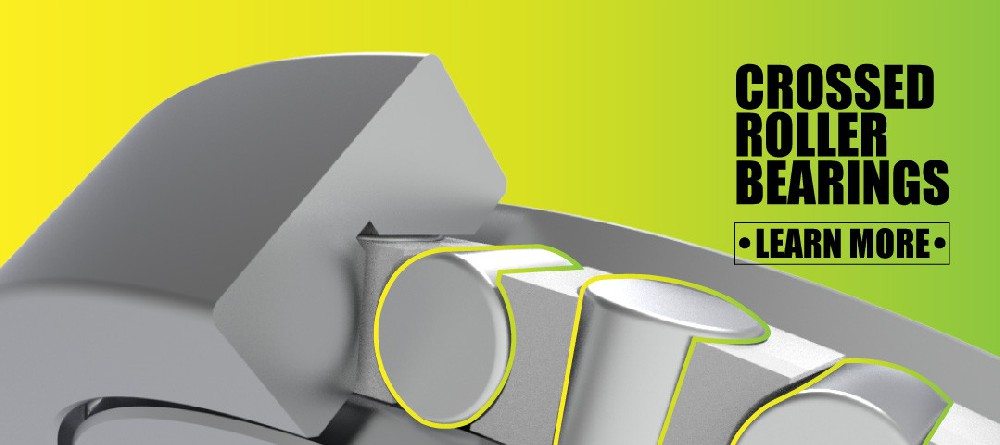In every piece of machinery, the 工业轴承 plays a crucial yet quiet role. It supports shafts, reduces friction, and allows smooth rotational motion, making it one of the most important components in industrial equipment. Despite its small size compared to other machine parts, a bearing’s performance has a direct impact on efficiency, reliability, and maintenance costs.
Selecting the wrong Industrial bearing can lead to increased energy consumption, vibration, premature wear, and costly downtime. With the wide variety of bearing types, materials, and precision grades available, making the right choice can feel overwhelming, especially for engineers and maintenance managers who must balance load capacity, speed, temperature, and environmental factors.
Industrial Bearing Selection Guide for Machinery and Equipment
In this guide, we will explain how to select the right industrial bearing for your machinery and equipment, step by step, with practical tips and clear recommendations for every application.
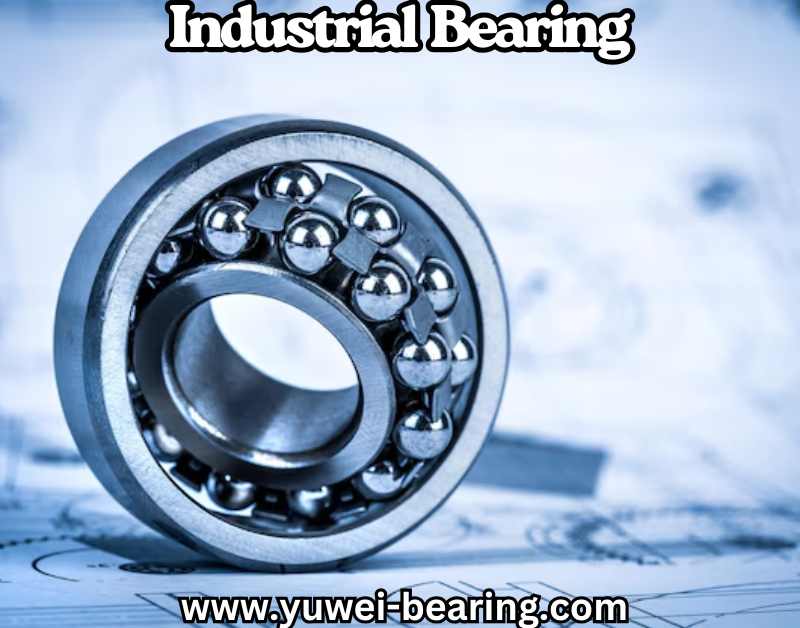
Understanding the Function of a Bearing
A bearing’s primary role is to reduce friction and support motion between moving machine parts. It keeps shafts aligned and allows smooth rotation under load.
In any mechanical setup, the Industrial bearing sits between a rotating shaft and a stationary housing. Its rolling elements transfer load efficiently while minimizing wear. Visit 这里!
Key functions include:
- Supporting radial and axial loads
- Maintaining shaft alignment
- Reducing energy loss from friction
- Enhancing mechanical efficiency
Bearings also influence noise levels, vibration, and overall machine stability. Without them, even simple movements would cause excessive heat, friction, and part failure.
Types of Bearings and Where They Fit
Different machinery demands different bearing designs. Understanding where each type performs best helps in correct selection.
| 轴承类型 | 最佳用途 | 负载类型 |
|---|---|---|
| 滚珠轴承 | 电动机、泵、风扇 | Light to moderate radial loads |
| 滚子轴承 | Crushers, conveyors, presses | Heavy radial loads |
| 圆锥滚子轴承 | Gearboxes, wheel assemblies | 径向和轴向联合载荷 |
| 推力轴承 | Turntables, vertical shafts | Axial loads only |
| 球面轴承 | Construction equipment | Misalignment handling |
| 滚针轴承 | Compact devices | High load in limited space |
Step-by-Step Process to Select the Right Bearing
Selecting a bearing becomes simpler when approached systematically. Below is a straightforward method engineers rely on:
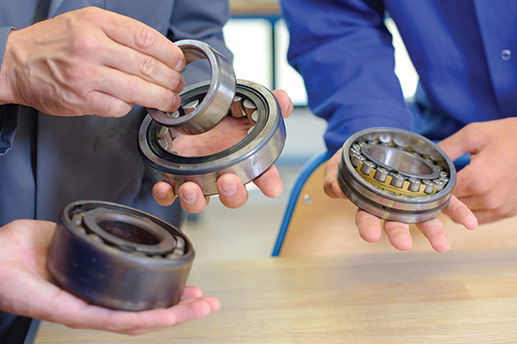
Identify Load Direction and Magnitude
- Radial load: use ball or roller bearings.
- Axial load: use thrust bearings.
- Mixed load: use tapered or spherical bearings.
Determine Speed Requirements
- High-speed machines need bearings with low friction and precise balancing.
- Slow, heavy-duty applications need bearings designed for high static load.
Assess Temperature Range
- If the operating temperature exceeds 120°C, choose heat-treated or ceramic bearings.
Check Environment
- For dusty or wet areas, sealed or shielded bearings perform best.
- For clean, dry environments, open bearings with regular lubrication are efficient.
Define Lubrication Method
- Grease lubrication suits moderate speeds and longer intervals.
- Oil lubrication works for higher speeds and elevated temperatures.
Evaluate Fit and Alignment
- Proper shaft and housing tolerances reduce stress and prevent premature wear.
Review Supplier Data
- Always check dynamic load ratings, speed limits, and clearance recommendations in technical catalogs.
This structured approach prevents over-sizing and ensures the Industrial bearing matches the machine’s duty cycle.
How Bearing Material Affects Performance?
Material selection impacts durability, corrosion resistance, and heat management.
| 材料 | Key Properties | 典型应用 |
|---|---|---|
| 铬钢 | High strength, affordable | 通用机械 |
| 不锈钢 | Corrosion resistant | Food, marine, and chemical plants |
| 陶瓷制品 | Low friction, heat-resistant | High-speed and clean environments |
| Hybrid (Steel + Ceramic) | Balanced performance | Automation and robotics |
Ceramic and hybrid materials are gaining ground because they operate smoothly under limited lubrication and high-speed conditions. Steel remains the standard for heavy mechanical applications.
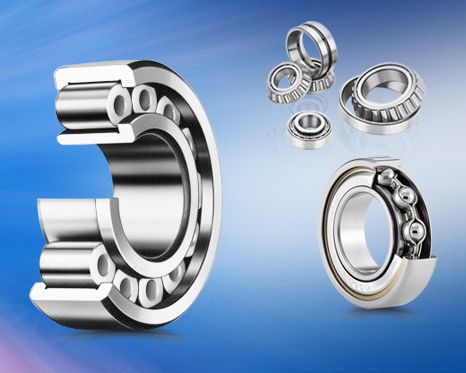
Source: Pinterest
The Role of Bearing Precision and Tolerance Grades
Precision defines how accurately a bearing maintains shape and motion under load. The tighter the tolerance, the smoother the rotation.
Common standards include:
- ABEC 1 / ISO P0 – general machinery
- ABEC 3 / ISO P6 – better precision, moderate speed
- ABEC 5-7 / ISO P4-P2 – high precision for CNC and aerospace
Selecting the correct grade depends on the machine’s purpose. For most industrial equipment, standard tolerance suffices. For automated or high-speed systems, precision-grade bearings ensure consistent performance and less vibration.
Installation and Mounting Considerations
Improper installation often shortens bearing life. A clean environment and correct tools are essential.
Installation guidelines:
- Do not hammer bearings into place; use presses or heaters.
- Heat bearings uniformly (80°C–100°C) before mounting to avoid damage.
- Ensure shaft and housing surfaces are clean, smooth, and within tolerance.
- Avoid forcing outer or inner rings separately.
- After installation, verify alignment and free rotation manually.
Correct mounting ensures the bearing operates within its designed limits, preventing noise and misalignment.
Common Causes of Bearing Failure
Every maintenance engineer faces bearing failures, but most are preventable.
| Failure Cause | Effect | Preventive Action |
|---|---|---|
| Poor lubrication | Overheating, wear | Use the correct grease type and quantity |
| 污染 | Surface pitting, corrosion | Maintain a clean installation area |
| Overloading | Fatigue failure | Match bearing to load capacity |
| 错位 | Uneven wear, vibration | Recheck shaft alignment |
| Loose fit | Slippage, heat | Use proper tolerances |
| Improper handling | Physical damage | Store and handle carefully |
Studies show that up to 80% of failures link to improper installation, lubrication, or contamination — not manufacturing defects.
Bearing Maintenance and Inspection Schedule
Consistent maintenance extends lifespan and improves reliability.
Routine guide:
- Daily: Monitor for noise or unusual vibration.
- Weekly: Measure operating temperature and check grease levels.
- Monthly: Inspect seals for leaks or damage.
- Quarterly: Lubricate according to usage.
- Annually: Replace worn bearings before total failure occurs.
Selecting Bearings by Industry Application
Different sectors demand unique features from their bearings. The table below matches bearing types to environments.
| 行业 | Preferred Bearing Type | Reason |
|---|---|---|
| 制造业 | Deep groove ball | High-speed precision |
| Mining | 调心滚子 | Dust resistance and load capacity |
| Food Processing | Stainless or ceramic | Corrosion resistance |
| 农业 | Tapered roller | Combined load support |
| Energy | Thrust spherical | Axial and heavy dynamic loads |
| 汽车 | Needle and ball | Compact, high precision |
Using industry-appropriate bearings minimizes downtime and aligns with regulatory requirements.
Supplier Quality and Certification Standards
Reliable suppliers ensure consistent performance and safety. A certified supplier guarantees dimensional accuracy, material integrity, and long-term availability.
Look for:
- ISO 9001 for quality management
- ISO/TS 16949 for automotive industry compliance
- RoHS and REACH for environmental standards
- Material traceability and testing reports
- After-sales support and warranty coverage
Partnering with certified manufacturers protects equipment investment and ensures component reliability.
Bearing Life Calculation in Simple Terms
Bearing life prediction helps in scheduling maintenance and avoiding breakdowns.
Formula:
L10 = (C/P)³ × 10⁶ revolutions
Where:
- 碳 = Dynamic load rating (in newtons)
- P = Equivalent bearing load (in newtons)
Example: if C = 20,000 N and P = 10,000 N,
L10 = (20,000 / 10,000)³ × 10⁶ = 8 million revolutions
This means 90% of bearings should last at least 8 million rotations before fatigue failure, under normal conditions.
Modern Innovations in Industrial Bearing
Technology has transformed bearing design and monitoring systems. Some major advances include:
- Smart bearings with temperature and vibration sensors.
- Self-lubricating bearings that reduce manual greasing.
- Composite cages that cut weight and improve heat dissipation.
- Low-friction coatings for higher efficiency.
Market studies show a growing shift toward predictive maintenance, where connected bearings send real-time data to maintenance software. This approach prevents costly shutdowns.
READ ALSO: 特定应用的工业轴承选择指南
How Correct Industrial Bearing Selection Reduces Total Cost of Ownership?
The bearing itself may cost little, but poor selection leads to repeated failures, downtime, and energy loss.
Correct bearing choice helps:
- Extend service life by 40–60%.
- Reduce energy use by up to 10%.
- Minimize emergency maintenance.
- Lower overall operating costs.
Factories that follow structured selection and maintenance programs report better equipment reliability and improved productivity across production lines.
Practical Checklist for Selecting Industrial Bearings
Before finalizing your choice, go through this simple checklist:
- Define load type — radial, axial, or combined.
- Check speed and temperature requirements.
- Review the environmental conditions.
- Confirm lubrication type and maintenance intervals.
- Select appropriate material and seal type.
- Ensure alignment accuracy.
- Verify supplier certifications and warranty.
- Calculate bearing life expectancy.
- Plan monitoring schedule.
- Document installation parameters.
Q1. What is the most common bearing type for industrial machinery?
在 宇威轴承, we specialize in precision bearings such as cross roller bearings and angular contact ball bearings 宇威轴承. Yet when looking across the broad landscape of industrial machinery, the deep-groove ball bearing (a kind of rolling-element bearing) remains the most widely used. It’s the “workhorse” bearing in many sectors — versatile, cost-effective, and reliable.
READ ALSO: Bearing Supplier Guide to Choosing the Right One for Your Needs
Q2. How often should a bearing be lubricated?
Lubrication frequency depends on the bearing type, load, speed, and operating conditions.
- Under normal conditions, bearings should be lubricated every 3–6 months.
- In high-speed, high-temperature, or dusty environments, lubrication may be needed every few weeks.
- Sealed bearings, like many from Yuwei Bearing, are pre-lubricated and usually maintenance-free.
Regular lubrication ensures smooth operation, reduces friction, and extends bearing life.
Q3. Can I replace one bearing type with another?
In most cases, you can replace one bearing type with another, but only if the load capacity, dimensions, and operating conditions are compatible. For example, a deep-groove ball bearing might be replaced with an angular contact bearing if higher axial load support is needed.
However, each bearing type serves a specific purpose, so always check the load direction, speed, temperature, and fitment requirements before substitution.
For precise guidance, it’s best to consult Yuwei Bearing’s technical team to ensure optimal performance and safety.
Q4. Why do new bearings fail early?
New bearings often fail early due to improper installation, poor lubrication, or contamination. Common causes include:
- Incorrect mounting — using too much force or misalignment during installation.
- Insufficient or wrong lubricant — leads to overheating and wear.
- 污染物 — dust, dirt, or moisture entering the bearing.
- Overloading or vibration — exceeding the bearing’s design limits.
To prevent early failure, always follow proper installation practices, use clean, high-quality lubricants
Q5. How can vibration monitoring help?
振动监测 helps detect early signs of bearing wear, imbalance, or misalignment before failure occurs. By tracking vibration patterns, maintenance teams can:
- Identify issues early — such as looseness, cracks, or lubrication problems.
- Prevent unexpected downtime through timely maintenance.
- Extend bearing life by addressing faults before they worsen.
In short, vibration monitoring enables predictive maintenance, ensuring Yuwei bearings and other machine components operate smoothly and reliably.
结论
选择正确的 工业轴承 is more than a technical requirement; it’s a critical decision that affects the efficiency, reliability, and lifespan of every piece of machinery.
A properly chosen bearing ensures smooth rotation, minimizes friction, and supports both radial and axial loads effectively. It also reduces vibration, prevents overheating, and lowers energy consumption, all of which contribute to safer and more cost-effective operations.
Ultimately, the right industrial bearing not only supports mechanical motion but also drives operational efficiency, reduces downtime, and safeguards your equipment investment.
By following systematic selection, installation, and maintenance practices, industries can maximize productivity, minimize costs, and maintain smooth operations. In short, a well-chosen bearing keeps machines running reliably, quietly, and efficiently for years to come.
